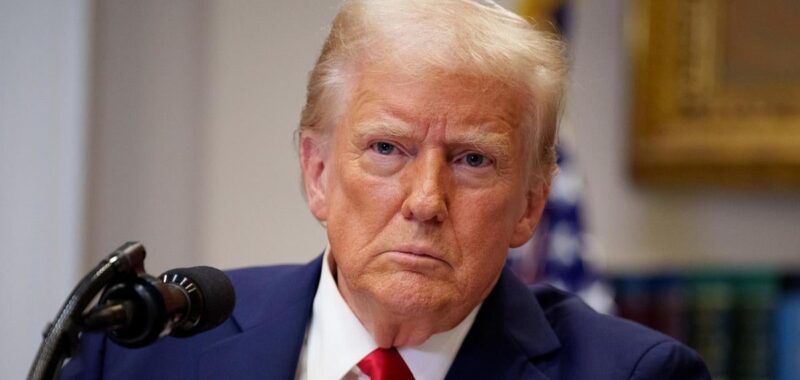President Trump on Saturday signed an executive order that imposes 25% tariffs on imports from Canada and Mexico, while adding an additional 10% levy on goods from China. The salvo, which President Trump had threatened even before returning to power earlier this month, underlines his willingness to use trade policy even against some of the U.S.’ largest economic allies.
The tariffs take effect at 12:01 a.m. Tuesday. The order imposes 25% tariffs on goods from Canada except for “energy resources” such as oil and gas, which are only hit with a 10% tariff.
“Should Canada retaliate against the United States in response to this action through import duties on United States exports to Canada or similar measures, the President may increase or expand in scope the duties imposed under this order to ensure the efficacy of this action,” the order read.
According to the White House, the salvo is aimed at curbing the flow of undocumented immigrants and illicit drugs into the U.S.; spurring a resurgence in domestic manufacturing; and raising federal revenue.
Experts warn that the impact of the tariffs could affect the economies of Canada, Mexico and China — the nation’s three biggest trading partners — as well as the U.S. itself. Canada’s economy could shrink by 3.6%, while Mexico could take a 2% hit, according to Cornell University economics professor Wendong Zhang.
At the same time, inflation in the U.S. could rise by as much as 1 percentage point, pushing it as high as 4% on an annual basis, or double the Federal Reserve’s goal for a 2% annual rate, Capital Economics said in a Jan. 28 research note.
“We have stressed that steep tariff increases against U.S. trading partners could create a stagflationary shock — a negative economic hit combined with an inflationary impulse — while also triggering financial market volatility,” said EY Chief Economist Gregory Daco in a Jan. 31 report.
Daco added, “These tariffs against Mexico, Canada and China would mark the first major wave of trade levies in Trump’s new term, with effects rippling far beyond those economies, as other nations brace for potential targeting and U.S. businesses navigate supply chain disruptions and retaliation risks.”
American consumers have been bracing for the impact of Mr. Trump’s tariffs, telling pollsters that they expected to see higher prices if the president followed through on his plans to enact them. Those expectations may have prompted some consumers to purchase goods before Mr. Trump’s inauguration on Jan. 20, economists say.
“The mere prospect of tariffs appears to be influencing the behavior of consumers and businesses,” analysts with Oxford Economics in a research note. “Imports surged in December, likely an attempt to front-run any tariffs, while consumers may be bringing forward spending in anticipation of tariff-related price hikes.”
U.S. consumers could see higher prices for produce and agricultural products imported from Canada and Mexico, including beef from the former and avocados and strawberries from the latter. Automobiles could see an average price increase of $3,000 each due to the tariffs, given the huge volume of cars now being built in Canada and Mexico, according to TD Economics.

